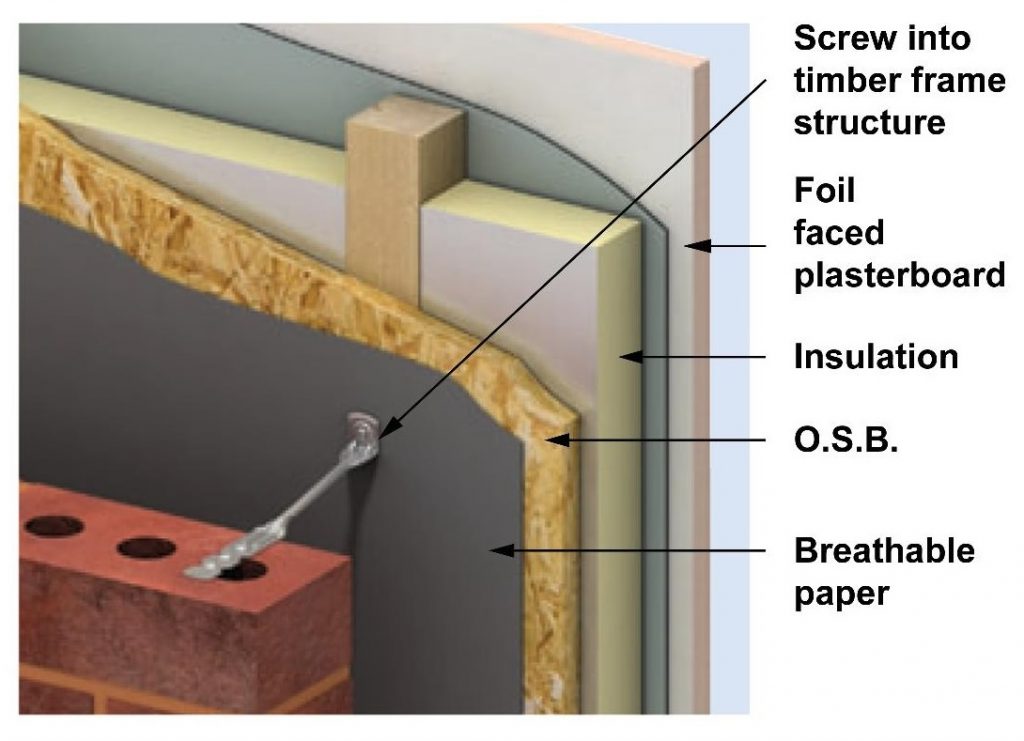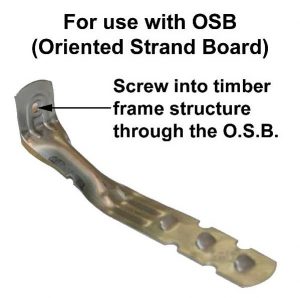What are Timber Frame Ties?

Timber frame ties are used to tie together structural frameworks such as timber frames to masonry walls for buildings up to 4 storeys (but not taller than 15 meters in height). Saying this, type 7 timber frame ties can be used in buildings from 5 to 7 storeys high due to their innovative design allowing them to withstand the extra movement of taller structures.
During the construction stage of buildings, timber frame ties are completely embedded within the mortar of the outer leaf of masonry walls, and attached to the structural timber frame of the building. Timber frame ties are important as they ensure that the masonry wall and timber frame act as one homogenous unit providing increased structural stability. This is important as it not only extends the safety of the structure but also leads to an increased lifespan.
What are the different types of timber frame ties?

As we touched on in the introduction of this article, there are more than one type of timber frame tie available on the market. In the UK, there are three commonly used timber frame ties which each have their own unique design in order to provide unique advantages. These timber frame ties are classified as Type 5, Type 6 and Type 7. Below is a little more information about each individual frame tie including for which buildings their design is purposely built for.
Type 5 Timber Frame Tie
The most commonly used timber wall frame tie in urban construction in domestic and commercial buildings is the ‘Type 5’. This timber frame tie is designed to be best suited for buildings up to 3 storeys (or 15m) in height that are no higher than 150m above sea level and where the average wind speed rarely exceeds 25m/s. Type 5 timber frame ties should be installed at a rate of 4.4 frame ties per square meter. This changes to 3-4 timber frame ties per meter around unbonded edges.
Type 6 Timber Frame Tie
Type 6 frame ties are almost identical to type 5 frame ties and they can be used in place of type 5’s without issue. The difference with type 6 timber frame ties is that they are suitable for building constructions up to 4 storeys in height (although still a maximum height of 15m). As per type 5 timber frame ties they are most suitable to urban areas such as flat cities and towns whereby average wind speeds rarely exceed 25m/s. They are also only suitable to be used as altitudes below 150 meters above sea level.
Type 7 Timber Frame Tie
The type 7 timber frame ties are capable of doing the same projects as type 5 and 6 timber frame ties. However, they can be used in developments of up to 7 storeys in height (with a maximum height of 18 meters). The reason type 7 timber frame ties can take this extra height is that their design can withstand the increased vertical differential movement that naturally occurs with buildings of such height. As type 7 timber frame ties structures are usually unique, the density in which you should use the frame ties is calculated based on the individual building. In this calculation, you will also take into account the location and other important previously mentioned factors such as the altitude of the location and the average wind speeds for that area.






